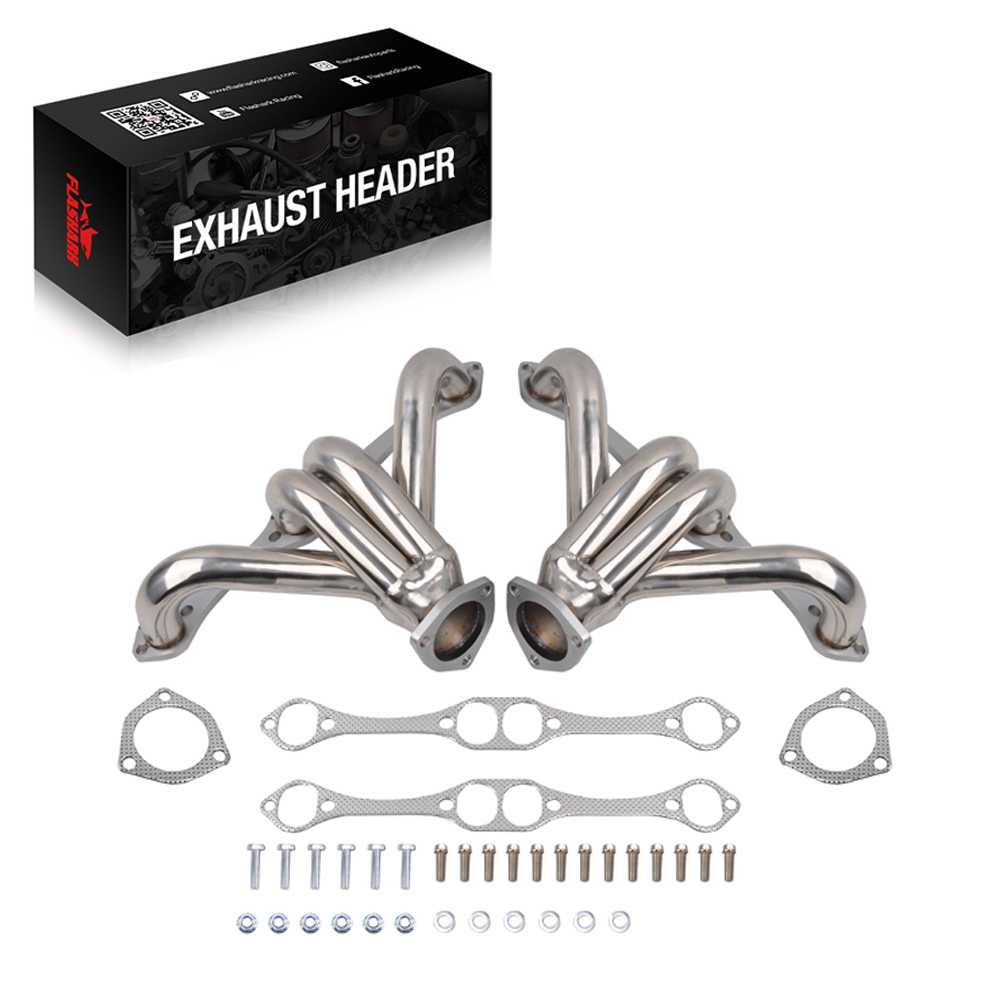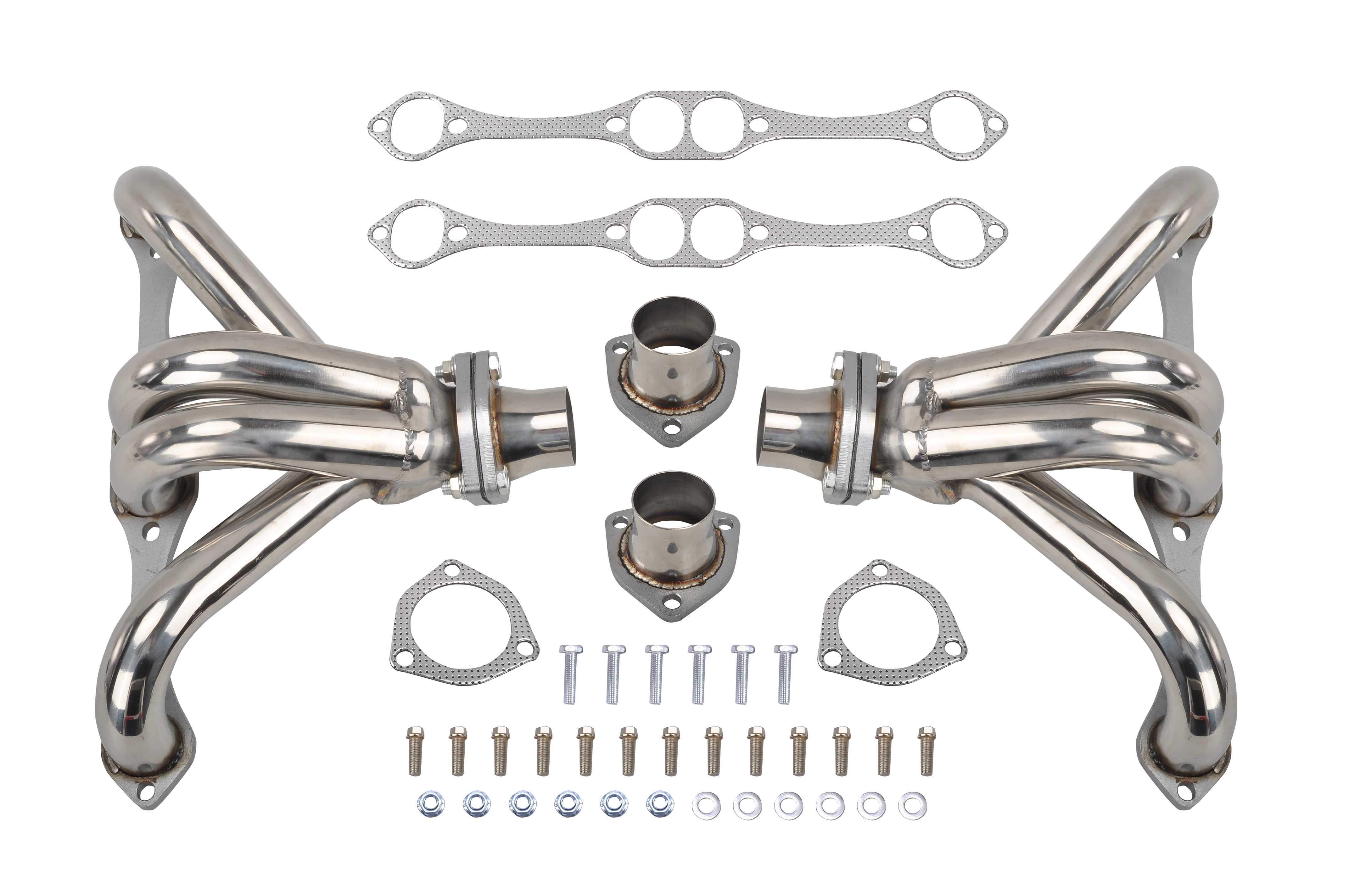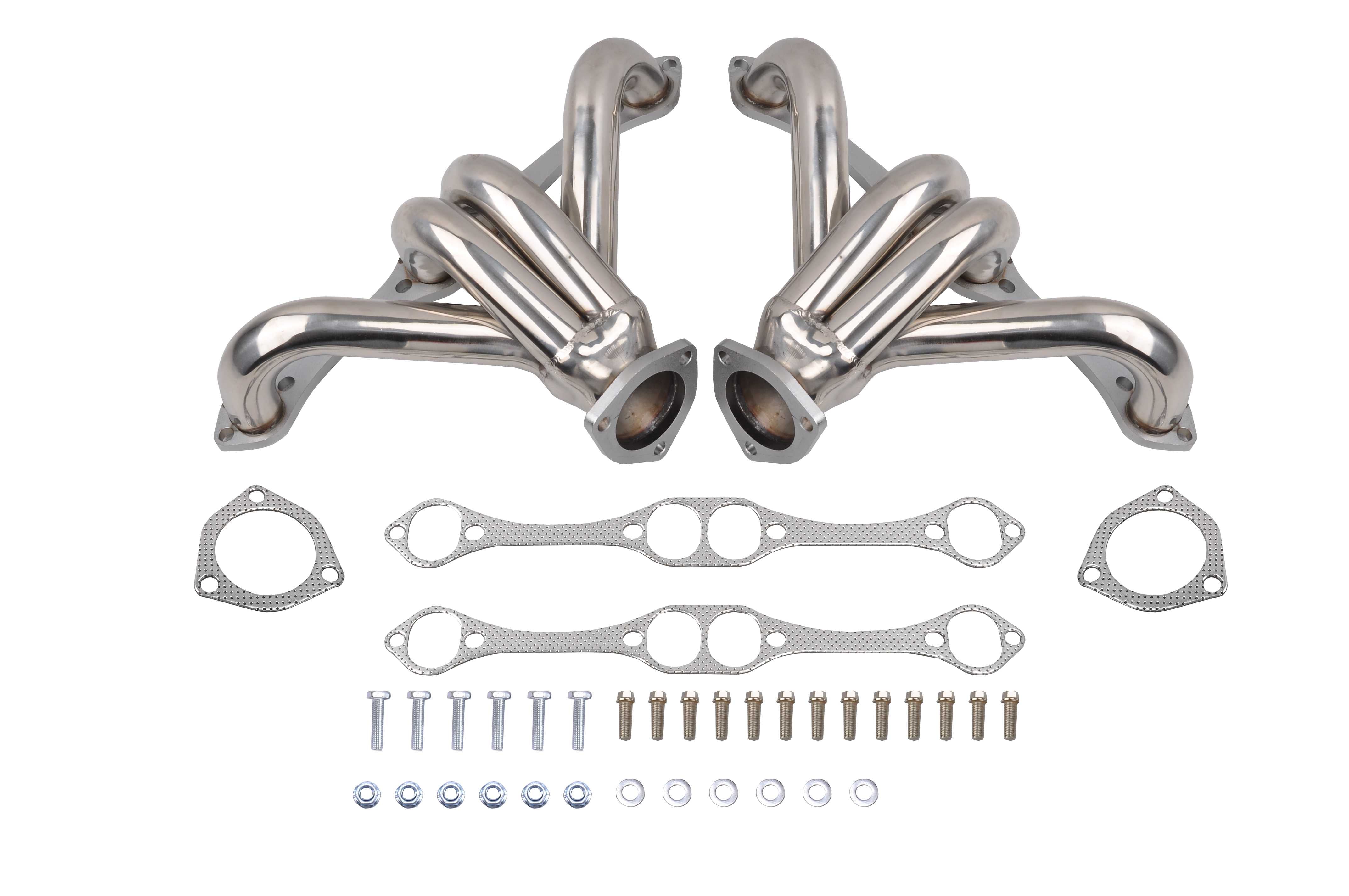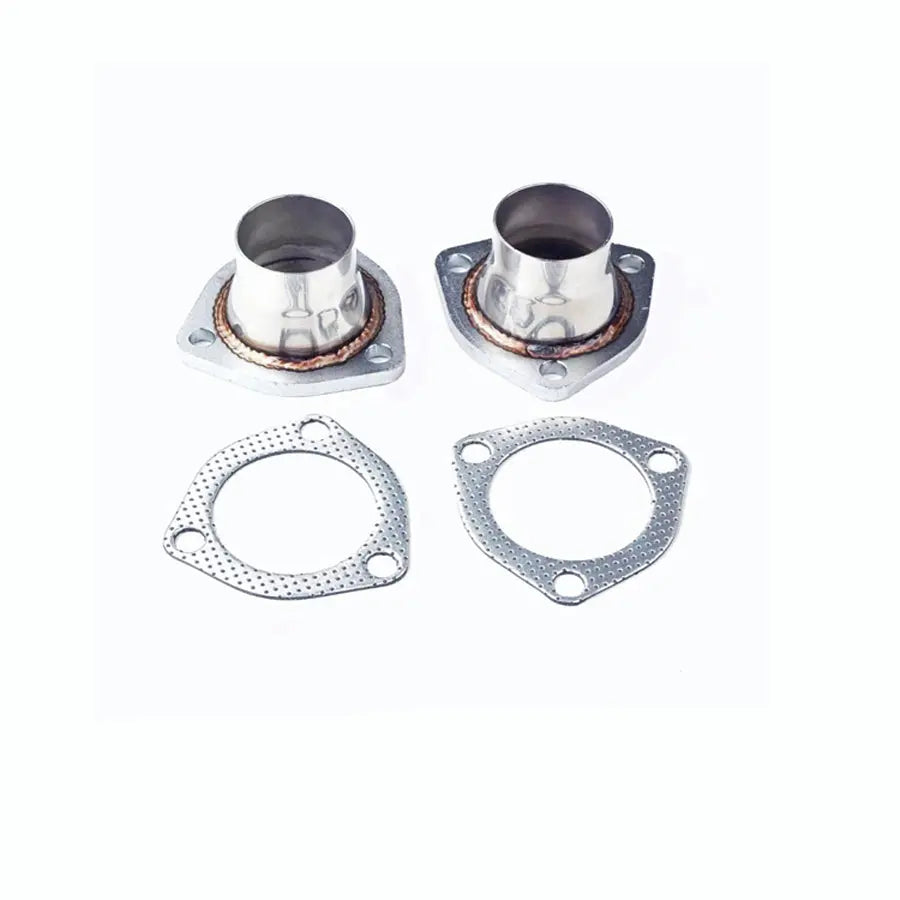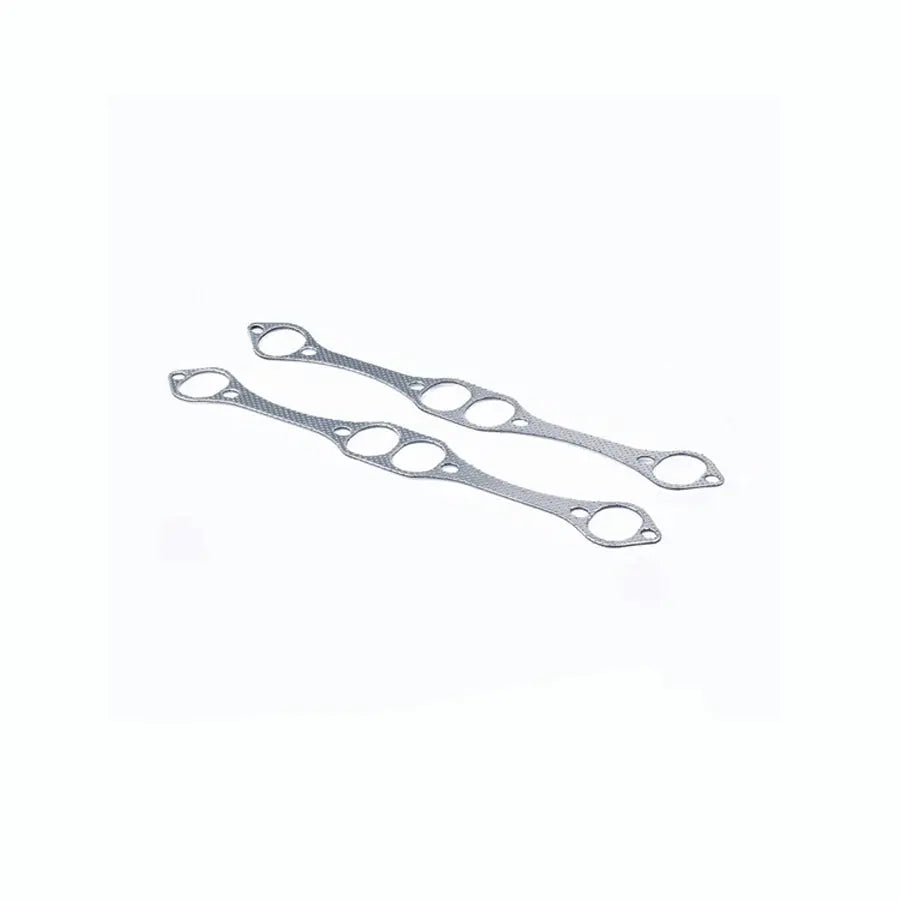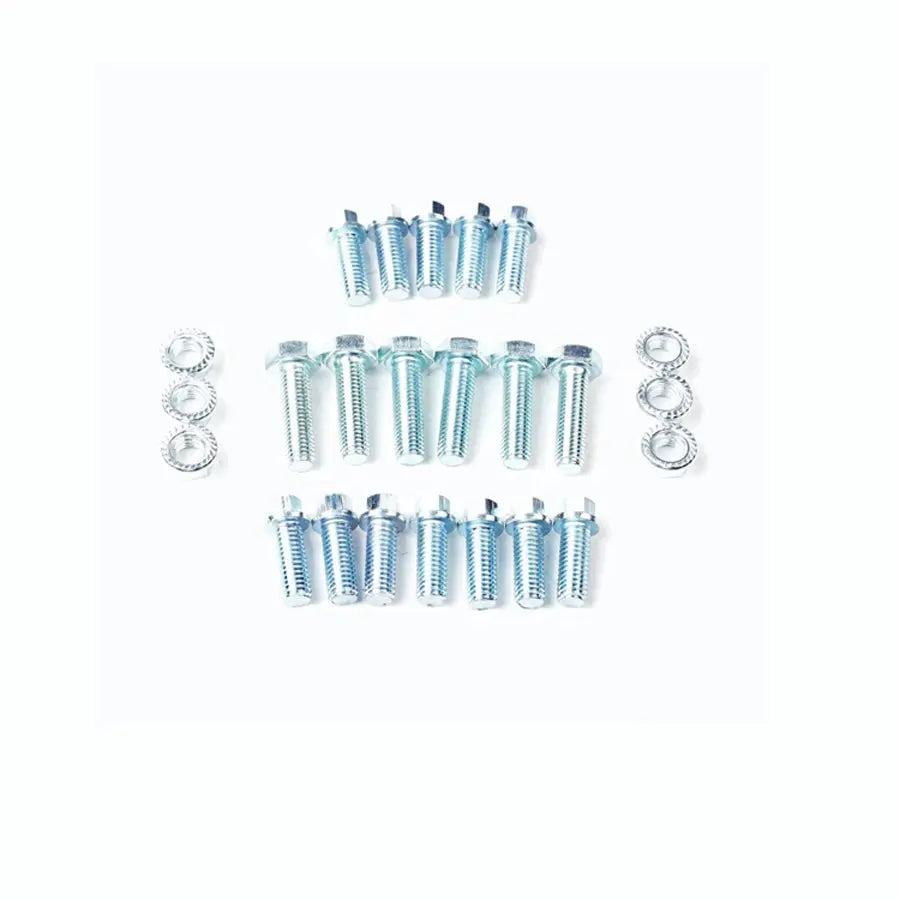Flashark Exhaust Headers for 1955 + Chevy SBC Small Block Hugger V8 262, 265, 283, 305, 327, 350, 400
Upgrading your SBC Block Hugger Headers is essential for enhancing engine performance and exhaust sound. These headers are designed to provide increased horsepower and a more aggressive exhaust tone, whether you're on the street or at the track. FLASHARK’s SBC Hugger V8 Headers are easy to install with a direct bolt-on design—no modifications required. Improve your engine’s efficiency and sound with this simple, high-performance upgrade.
Fitment:
Fits All Small Block Chevy SBC V8 Engines from 1955+ using the Standard Exhaust Pattern - 262, 265, 283, 305, 327, 350, 400
(except 1971 Chevrolet Nova,1972 Chevrolet Caprice,1983 Chevrolet Caprice Classic Sedan 4-Door 5.0L,1984 Buick Regal,1986 Chevrolet Caprice 5.7,1987 Chevrolet Caprice,1978 Chevrolet Corvette, 1973 Chevrolet Nova Base 5.7L 350)
NOTE: Not fit 4WD
Details
--Made with 1 5/8" OD diameter heavy-duty mandrel bent 18 gauge tubing
--Large 2 1/2" collectors. Reducers are 2"
--4 1/4" length from the bottom edge of the head to the outside of the middle tubes
--Made with thick 5/16" flanges to resist warpage
Specifications:
Brand Name: FLASHARK
Certificate: ISO9001:2000
Application: Automobile Exhaust Header
Material: Stainless Steel
Surface: Mirror Polish
Model: EH28030
Inlet/ Outlet: 1.5"/ 2.5"
Primary Diameter: 1-1/2 in.
Collector Diameter: 2-1/2 in.
Head Flange Thickness:3/8 in. (9.5mm)
Pipe Thickness: 16 gauge (1.5mm)
Exhaust Header VS Manifold, which is the better choice?
The structural differences between exhaust headers and manifolds are the material and size. From the material, exhaust headers are made of lighter, thinner steel, while exhaust manifolds are made of thick iron. Exhaust headers are also longer than exhaust manifolds. When in use, exhaust manifolds create back pressure, which lowers performance. Because each cylinder of the engine is given its own tube, however, headers eliminate this problem; thus, allowing the gases to exit without the creation of back pressure. Therefore, modifications exhaust headers are a BETTER choice than an exhaust manifold.
SOME ITEMS YOU MAY ALSO LIKE
In addition to purchasing this product, Flashark highly recommends that you purchase Flashark and Spelab's new collaborative product, the silicone coolant hose kit; to replace the stock rubber coolant hose in your car's cooling system.
Are silicone coolant hoses better? Coolant hoses transport the coolant—a mixture of water and antifreeze—from the engine to the radiator and back. The coolant absorbs heat from the engine block and heads and then releases this heat through the radiator, where airflow dissipates it away from the vehicle. This continuous flow is crucial for preventing engine overheating, which can lead to severe damage or failure.

